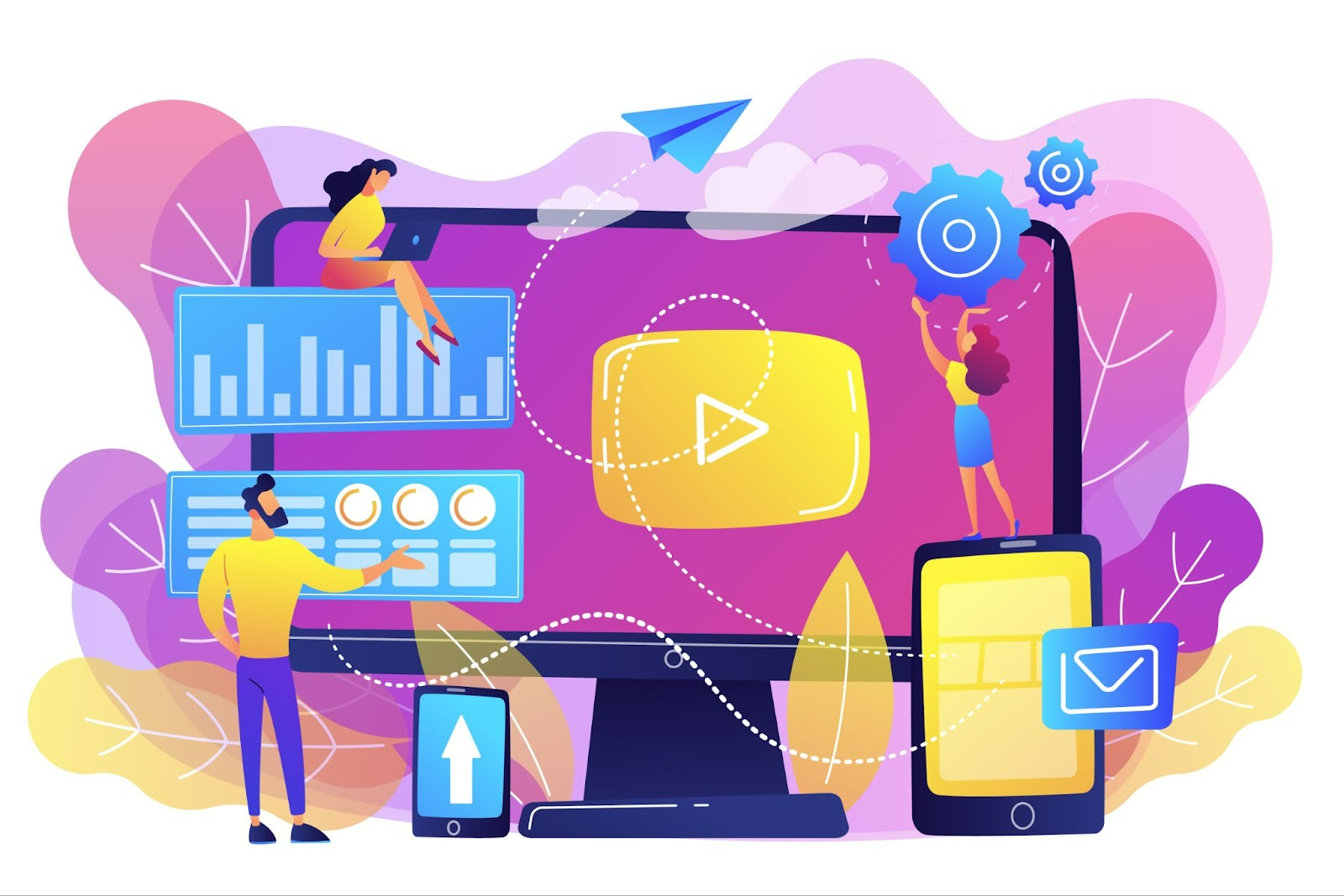
How to Make Your Blog More Engaging With Diverse Content
Every blogger and content marketer knows that the best results come from blogging consistently. HubSpot also says that churning out a greater number of blogs can allow businesses to garner almost 3-5 times more traffic! But when you have to consistently come out with great content, it can leave you in a bind – what can you do differently to make your blog content stand out? The answer lies in making your blogs richer with diverse content.
Not sure where to start? In this article, we’ll tell you everything you need to know about using different content types so that you can offer something for everyone in your audience and break the monotony. You also are welcome to learn these 5 ways to improve your blog design in the easiest way But before we get to the actual bit on the diverse content types, it’s important to first understand what makes this so important for your blog’s success.
Why is Diverse Content Critical for Your Blog’s Success?

People in your diverse audience base usually come with different priorities when they’re searching for digital content. While some look for short-form articles, others might be looking for a piece that can explain a topic visually too. By including different types of content in your blog, you’ll be able to ensure that your blog meets the unique needs of a wide range of people.
Including diverse content in your blog can also open up a world of possibilities for you. You can get creative with your content and experiment with different structures that will appeal to your target audience. Rather than being monotonous with your content, you’ll get an opportunity to think outside the box to look for new ways to incorporate different content types into your blog. Consider utilizing reverse image search to find the most distinct content for your blog.
Diversity in content can also help in increasing brand awareness across different channels. For instance, when you are publishing your written content in the form of a video on YouTube or an infographic on social media, or generate images with AI for blog posts. You’re essentially making it easier for your audience to access the information from multiple sources. This can also help in increasing the audience’s trust in your brand.
Different Content Types to Include in Your Blog
Customer conversion through blogging is a long-term process that involves:
1. Attracting customers
2. Engaging customers
3. Delighting customers
While the visual content does the first job of attracting customers, the next two steps are accomplished by providing them with more detailed and useful content. So, it’s amply evident that different forms of content have important roles to play in the customer journey. Here’s an overview of the content that must be part of your strategy: Contenuti web: quali sono i migliori?
We’ve already discussed the importance of diversifying your blog content. Now, let’s explore how you can go about it –
1. Try out different blog post formats
If you want to do something new with your blog content each time, why not test out multiple content formats? Most blogs tend to have very rigid guidelines around word count, keyword density, link building, etc., and this has become the industry norm. But what if a different content format could provide a better reading experience for your audience? That’s not to say that all your blog content should be less than 500 words. But there are ways you can mix up your content to enhance its readability for the audience.
Here’s how this can be done:
- Listicles: With the emergence of viral content in recent years, listicles have also become quite popular, largely because they fit into the same bill. What makes such posts great is that they are easy to read, straightforward, and actually built for sharing. With a listicle, you can turn an ordinary and drab topic into something that will surely interest the readers.
- Short-form blogs: Many bloggers wrongly believe that short-form posts can come across as low quality. But short-form posts can be quite powerful and often say much more than a keyword-stuffed long blog post. Many readers also prefer posts that get the point across without wasting too much of their time by getting into details.
- Long-form content: Long-form content is great for how-to guides and building thought leadership articles. This content format is especially useful for providing some legitimate value to your readers by educating them through your content. What’s better is that long-form content is loved by Google too. If creating long-form blog posts seems like too much effort, you can always outsource the content writing efforts to a Content Marketplace like Narrato. Marketplaces like these have thousands of skilled and experienced freelance writers who can create quality blog content on any topic, but for a more strategic approach to SEO-driven articles, digital marketing agencies that provide these services can help your content rank and perform better.
2. Make the most of visual and audio content

If you want to create impactful content, it’s important to include some visual elements in it too. According to HubSpot, readers are able to follow text accompanied by visuals almost 323% better than plain text. Including some form of visual content in your blog can also lead to increased conversions and more social shares.
Here are some of our tips to achieve the same –
- Images: Rather than having walls of text, you can beef up your blog post through high-resolution photos, diagrams, charts, and screenshots. There are many places where you can get free stock photos for almost any niche. You can also use AI Image Enhancer to optimize and improve your images, before publishing.
- Infographics: This is a great way to present data-driven imagery that is based on your own research. Infographics are great for grabbing the attention of your audience in less than 15 seconds.
- Video: Another way is to repurpose old blogs into diverse video content. This can be a great way to target your customers through multiple channels. You can also provide your users with a written transcript of the video.
Another great new way to do more with your blog content is by turning it into a podcast. With this, you’ll get an opportunity to leverage audio medium too. Recording a podcast enables you to leverage the power of spoken words, adding depth to your content and providing an alternative format for your audience to engage with your insights..
A blog post can be turned into a podcast episode by reading it out loud and adding some additional commentary or insights. This can help to create more engaging and dynamic content.
By creating a podcast and distributing it through podcast distribution software, a blog can reach a wider audience beyond its regular readers. This can help to attract new visitors and increase the blog’s visibility.
3. Add data to your blog content
Readers are always interested in knowing the specifics, whether it is the percentage of people joining a social media platform every day, or the number of businesses increasing their annual content marketing budget & link building budgets are vast, says Lee Dobson at NI Link Building. Specifics are great for building trust with your audience and showing them that you’ve done your research. Statistics and facts, wherever necessary, can provide readers with more context on the topic. You can find trending topics for your audience in online communities.
Adding data to your blog content is useful for building audience trust, but did you know it’s also a great way to add some high-quality backlinks? This means that it will help you improve your Google rankings too. If you want to reel in the visual audience, you can consider presenting this data in the form of a graph or an infographic as well. Take this electrician salary guide as an example. This resource includes a ton of data but presents it in a visually-pleasing way by incorporating graphs and even an interactive map, which is sure to capture those who consume content visually.
4. Leverage Guest Posts
Guest Posting is something that is a part of every marketer’s strategy these days. In fact, most bloggers write around 1 to 5 guest posts every month, on average. This means that there are many bloggers out there constantly on the lookout for new blogs to contribute to. By having a ‘Write for Us’ section on your site, you can leverage guest blog posts to diversify your content. Since every new writer will bring a fresh perspective and new ways of looking at a problem, it can be an excellent way to offer something new to your audience. It also takes some of the content creation load off your shoulders.
5. Combine blogging with email marketing

Although email marketing is one of the oldest digital marketing strategies, it continues to deliver results even today. The great thing about email marketing is that it allows you to interact directly with your audience. It is the modern-day equivalent of telemarketing. But rather than in-the-face marketing, it allows your readers to go through the content in their own time.
You can turn your blog content into an email newsletter or use an email marketing tool to push any new blog posts to your email list automatically. To level up your email marketing game, you can even provide your readers with an interactive newsletter and make an usage of unusual formats such as HTML5 flipbook. Another effective way to strengthen your emails is by creating a professional HTML email signature. This small addition can make a big impact by personalizing your messages and reinforcing your brand with every email you send.
6. Create blog posts that answer relevant questions
There’s no dearth of compelling new topics out there for your blogs, but searching for them isn’t always the easiest. If you want to diversify your blog content with new topics, you need to start by answering the right questions. These questions can be related to the major pain points of your audience, the newest trends overtaking your industry, and other inquiries like these. The goal is to provide your audience with answers to their most pressing questions through your blog.
So where do you get these questions from? One way is to do a quick Google search around your target keyword to find out what the audience is searching for and what your competitors are writing about. Another way is to look through the ‘People also ask’ sections in the Google search results. You can also interview influencers, experts, and thought leaders to find out some important questions that need answering.
For your ease, there’s also a third way, you can use an AI answer generator to find the most common questions people are asking about any specific topic. For example, if you want to know the top five questions people have about marketing, just ask the tool, and within seconds, it will provide a list. This option is great for those who don’t want to put in the extra effort and prefer a quick, automated solution to gather relevant questions.
Wrapping Up
With this, we’ve covered some of the best strategies you can use for diversifying your blog content. But using these strategies just for the sake of it will not deliver the results you want. It’s important to take into account your audience’s preferences too when diversifying your blog content. So, what’re you waiting for? Go ahead and get creative with your content, and take your blog content marketing strategy to the next level! For those looking to take their content strategy to the next level and create truly media-rich, audience-focused campaigns, this resource is worth exploring. Discover the Media & Marketing course by Holistique Training — a practical programme that dives into media channel selection, content creation techniques, and performance tracking. Ideal for content creators, marketers, and brand storytellers aiming to drive deeper engagement through smart, strategic media use
Latest Posts
-
Japan, South Korea Lead 157% AI App Growth as Users Hit 666M
-
How to Optimise Your Videos for SEO
-
Data-Driven Influencer Selection in Video Marketing
-
How to Use Video Walkthroughs to Transform Your Real Estate Marketing Strategies
-
How Web Hosting Impacts Video Marketing Success: A Guide for Small Businesses


